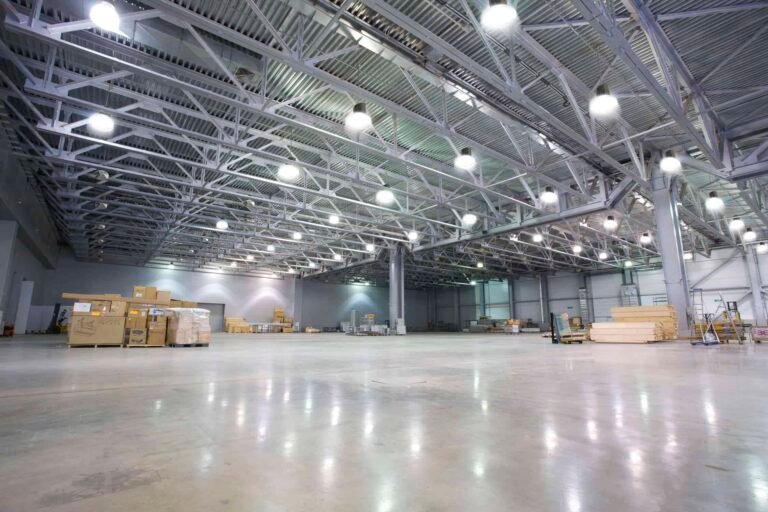What is LED Lighting?

LED lighting technology provides a more energy-efficient and longer-lasting alternative to traditional lighting technologies such as halogen, fluorescent and incandescent lighting. LEDs produce light with significantly less energy
By investing in LED lighting, you can not only reduce your energy costs, but also benefit from the advanced features and flexibility that LED lighting offers. LED lighting can also reduce your environmental footprint, as it uses significantly less electricity than traditional lighting technologies. Therefore, LED lighting is an excellent choice for everyone, from homeowners and businesses to industrial and outdoor applications. output than traditional lighting technologies, and have a longer lifespan, reducing maintenance and replacement costs. LED lighting technology can also be tailored to different environments, giving you greater control over the amount and type of lighting used.
Given the many advantages of LED lighting technology, it is increasingly being adopted across a range of sectors, from residential and commercial to industrial and outdoor applications. LED lighting is also becoming popular in automotive, aviation, and military applications, as it offers increased safety and reduced energy consumption. Furthermore, LED lighting can be used in a variety of decorative applications, allowing homes and businesses to add unique and stylish lighting accents. With its low energy consumption, high efficiency and long life, LED lighting technology is set to revolutionise the way we light our world.
What are the benefits of LED Lighting
LED lighting provides a number of benefits over traditional lighting. It uses significantly less electricity than incandescent or halogen lighting, resulting in lower energy bills. LED lighting also produces very little heat, meaning it doesn’t add to the load of air conditioning, and it has a longer lifespan, lasting up to 25 times longer than traditional lighting. LED lighting also has a more natural, pleasing light quality, and is more durable than traditional lighting, making it suitable for harsh environments.
The many advantages of LED lighting have seen its widespread adoption in both commercial and residential settings. LED lighting is now used in a variety of applications, from street lighting and parking garages to residential bathrooms and kitchens. By making the switch to LED lighting, businesses can save money on energy bills, have a more consistent, natural light quality, and reduce their environmental impact by using less energy. With its many benefits, LED lighting is likely to remain a popular choice for many years to come.
Discover how the Energy Saver can help
Frequently Asked Questions
LED lights are definitely worth it. They are energy-efficient, have a long lifespan, and come in various shapes, sizes, and colours. You can save money on energy bills and won’t have to replace them as often as traditional bulbs. They can also be dimmed without affecting their efficiency. Overall, investing in LED lights is smart economically and environmentally.
LEDs are a better lighting option than incandescent bulbs as they last longer, use less energy and produce less heat. They come in different colors and are suitable for indoor and outdoor use. LEDs are also commonly used in electronic devices. Using LED lighting may have health benefits such as reducing eye strain and improving productivity. Overall, LED lighting is a cost-effective and eco-friendly choice.
LED lights are an excellent choice for many reasons. They last up to 50,000 hours, are energy-efficient, and versatile for use in various settings. LEDs are eco-friendly, contain no hazardous materials and produce less heat, making them cost-effective and energy-efficient.
To protect your eyes from LED lights, you can follow these tips:
1. Use anti-glare screens or films on electronic devices to reduce the amount of blue light that reaches your eyes.
2. Adjust the brightness of your device’s screen to a comfortable level that doesn’t strain your eyes.
3. Position your computer screen or electronic device below eye level to reduce the amount of light entering your eyes.
4. Take breaks and practice the “20-20-20” rule: Every 20 minutes, look away from your screen and focus on an object at least 20 feet away for 20 seconds.
5. Wear blue light-blocking glasses while using electronic devices, especially at night.
6. Use warm white LED lights instead of cool white ones, as the latter emits more blue light. Additionally, use dimmer switches or lamps with adjustable brightness levels.
7. Keep some distance between your eyes and LED light sources, especially bright ones like TV screens and computer monitors.
Switching to LED bulbs is a smart investment due to their energy efficiency, longer lifespan, and lower heat emissions compared to traditional bulbs, resulting in cost savings in the long run. LED bulbs are also available in a variety of colours and brightness levels to fit different lighting needs. Overall, LED bulbs offer a simple and effective way to reduce energy consumption while improving lighting quality.
LED lights in the UK cost less to run than traditional lights due to their energy efficiency. Wattage, daily usage, and electricity costs all affect the cost. Typically, a 60-watt incandescent bulb will cost around £45 per year, whereas an equivalent LED bulb will cost only £6 per year. LED bulbs also last longer, reducing the frequency of replacements and saving money in the long run.
Switch to LED bulbs! They’re more efficient, last longer, and save energy costs. LED bulbs consume up to 75% less energy than fluorescent bulbs and last up to 25,000 hours versus 10,000. Unlike fluorescent bulbs with toxic mercury, LEDs are environmentally friendly and come in various colors. They can also be dimmed for any lighting requirement.
Generally, LED bulbs can replace halogen bulbs because they are energy-efficient, eco-friendly, and have a longer lifespan. Choose LED bulbs that work with your fixtures and dimmer switches. Some LED bulbs are not dimmable, while some halogen bulbs emit a warm, yellowish light that some people may prefer. Consider the drawbacks and benefits before swapping.
LED lights last up to 25 times longer than traditional incandescent bulbs, with some rated for over 50,000 hours. They use less electricity and are resistant to wear and shock, making them durable and energy-efficient. Though LED lights may cost more upfront, their longevity and efficiency make them a smart investment. Proper usage and maintenance can ensure reliable lighting for years to come.
LED lights dim over time due to the degradation of the phosphor coating and other factors such as temperature and humidity. Although LEDs have a long lifespan, they may need to be replaced if they become too dim.
Hire a licensed electrician to change downlights. They have the knowledge and experience to handle electrical wiring, test electrical flow, and address potential issues. Safety is a priority, and attempting to change downlights without professional help can pose a risk of electric shock or fire. Let a licensed electrician ensure a safe and successful installation of your new downlights.

